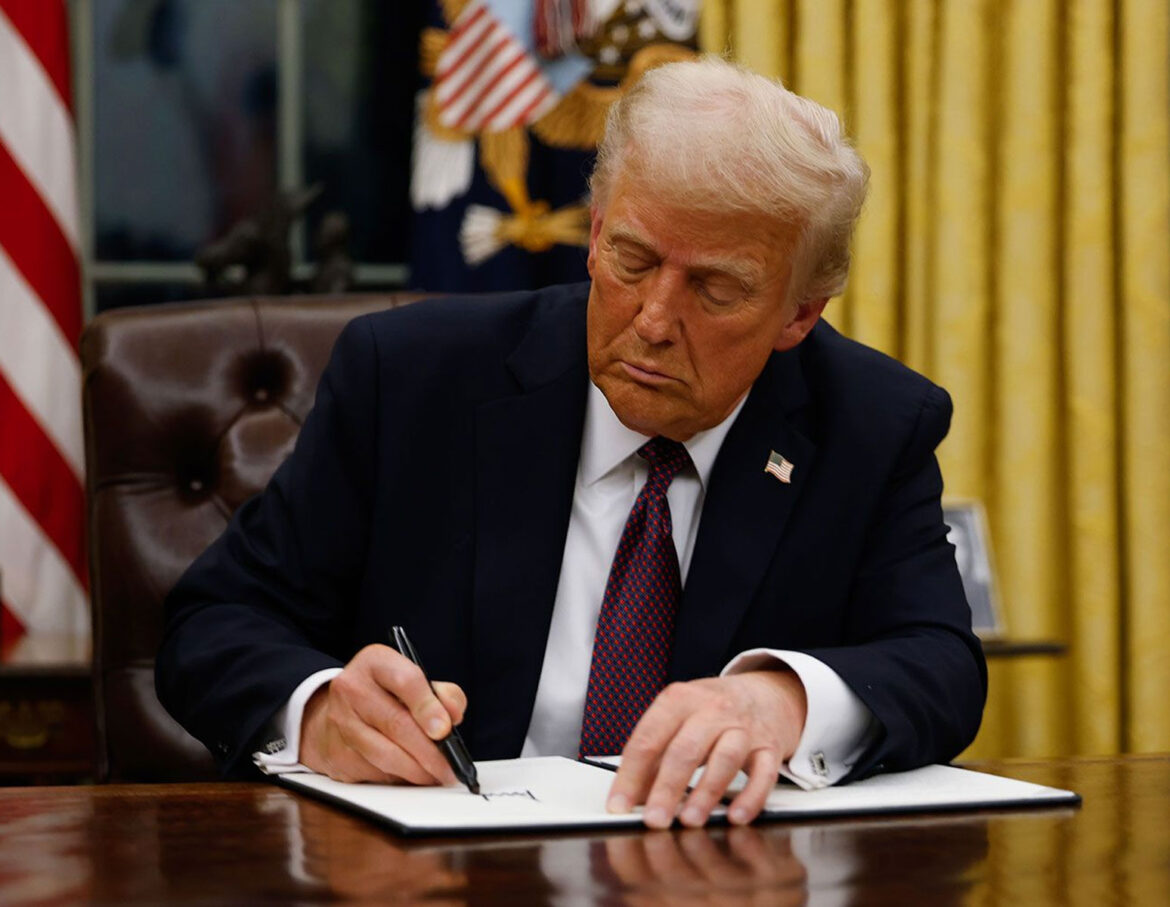In a landmark move, US President Donald Trump on Saturday signed an executive order designating English as the official language of the United States, emphasizing the need for national unity in a country shaped by immigration.
The White House released the executive order, which asserts that it is “long past time” for the United States to officially recognize English as its national language.
“A nationally designated language is at the core of a unified and cohesive society, and the United States is strengthened by a citizenry that can freely exchange ideas in one shared language,” the order states.
Changes to Federal Language Policies
The executive order repeals a directive from the 1990s, issued under then-President Bill Clinton, which required federal agencies and federally funded institutions to provide language assistance to non-English speakers. However, under the new order, agencies retain some discretion regarding multilingual services.
“Nothing in this order … requires or directs any change in the services provided by any agency,” the document clarifies. It further grants agency heads the authority to determine the level of assistance necessary “to fulfill their respective agencies’ mission and efficiently provide government services to the American people.”
Legal Challenges and Opposition
Trump has aggressively pursued executive actions in the early days of his presidency, implementing policies that align with his right-wing agenda. However, many of his orders have faced legal hurdles, particularly those seeking to rescind federal funding allocated by Congress.
Critics argue that eliminating federal language assistance could marginalize non-English speaking communities, particularly Spanish speakers, who number over 40 million in the United States. In total, more than 68 million people speak a language other than English at home, according to US government data from 2019.
The US is home to a diverse linguistic landscape, with over 350 languages spoken nationwide, including Spanish, Chinese, Vietnamese, and numerous Native American languages. While English has historically been the dominant language, the executive order underscores that the nation’s founding documents, including the Declaration of Independence and the Constitution, were written in English.
The order is expected to ignite debate over linguistic and cultural identity in the United States, with supporters praising it as a step toward unity and critics decrying it as exclusionary. Legal battles over the implementation and potential consequences of the policy are anticipated in the coming months.



